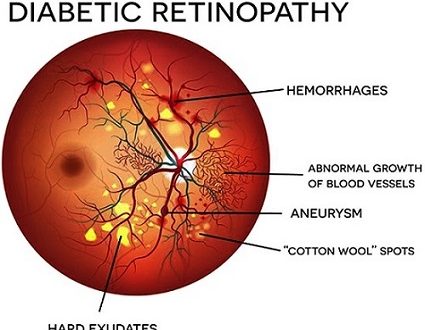TBB BUREAU
BHUBANESWAR, NOV 13, 2021
Diabetes has seen a surge in the recent past, and the preventable blindness caused by the disease too is on the rise. Having more than normal blood sugar levels may not be a direct cause of blindness, but it does increase the chance of developing serious eye conditions like diabetic retinopathy, which may lead to permanent loss of vision over time.
According to the reports, over 422 million people worldwide suffer from diabetes, especially in low and middle-income countries. It is the leading cause of death worldwide, accounting for 1.5 million deaths yearly. It is also responsible for 2.6% of global blindness.

“One in 4 working adults (early ’20s to early 60s) have undiagnosed diabetes. Very often, vision problems lead to the discovery of the condition. It’s important to be aware of the symptoms of diabetic eye disease. If it is left untreated, these can even lead to complete vision loss,” says Dr. Chandra Sekhar Sahoo, Senior Consultant – Ophthalmologist, Dr. Agarwals Eye Hospitals Bhubaneswar.
Risk factors involved in Diabetic Retinopathy are: Longer duration of diabetes, Poor control of blood sugar, High Blood Pressure, High Cholesterol, and Pregnancy.
The initial stages do not have any symptoms. As the disease progresses blurred vision, spots floating in vision, dark or empty areas of vision, sudden visual loss can occur when the disease is mild to moderate. It is called non-proliferative diabetic retinopathy (NPDR) and the advanced stage is called Proliferative diabetic retinopathy (PDR).
“In NPDR stage blood vessels of the retina become weak and start leaking fluid and blood into the retina. When fluid leaks into the central portion of the retina called the macula, which is responsible for central vision patient can present with a sudden loss of vision. In advanced stages, blood vessels get blocked and as an attempt to restore lost blood supply eye forms new blood vessels. These vessels are very fragile, easily leak fluid and blood into the retina as well as into the vitreous a jelly-like substance that fills the center of the eyeball. If left untreated membrane and scar tissue are formed which pulls the retina away and causes a retinal detachment,” says Dr. Sahoo.

Diabetic retinopathy can be clinically diagnosed by dilating the pupil using drops and examination of the retina. If changes are detected, tests like FFA and OCT are done to assess the severity and extent of the disease. Treatment includes a laser for damaged vessels. If swelling in the retina is observed monthly intravitreal anti-VEGF injections are given in the eye till it reduces. In advanced stages, surgeries are performed. “Risk of developing retinopathy can be reduced by certain lifestyle modifications like eating a healthy diet, regular exercise, taking regular medications and regular monitoring of blood sugar level along with strict control on Cholesterol and BP. Last but not least is regular eye screening including retinal examination every six months. Early detection of retinopathy and treatment can help prevent severe visual loss and reduces the need for surgery,” advises Dr. Sahoo.
 The Business Bytes
The Business Bytes
